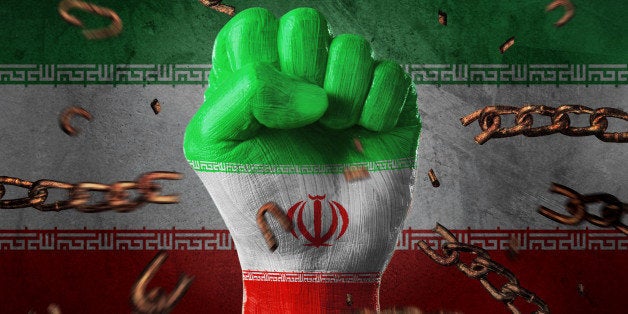
The Iran-Syria alliance was formed shortly after the 1979 Iranian Revolution. The kinship that emerged between the two governments was not due to the fact that Iranians were Shia adherents and that the Syrian government was led by Hafez al-Assad (President Bashar's father), an Alawite and a follower of an offshoot of Shia Islam. Rather, it was because both systems were threatened by three formidable adversaries: the US, Israel, and Iraq.
With the Iraqi invasion of Iran in 1980, Syria was the only Arab country that stood by Iran and consequently was isolated in the Arab world. In an effective move, Syria shut down the Kirkuk-Banias pipeline and deprived Iraq of half of its remaining oil export capacity. In return, Syria received heavily subsidized oil from Iran.
Why is Syria of vital importance to Iran? Iran's hostility toward Israel has been the most entrenched of its foreign policy determinations since the Iranian Revolution. On another front, the relationship between Syria and Israel had remained hostile because of the occupation of the Golan Heights since the Six-Day War in 1967. The Iranians took advantage of the situation, and by strengthening their ties with Syria, sought to make Syria a de facto shield against a possible military confrontation with Israel.
In the meantime, with the logistical and economic assistance of the Iranians, Hezbollah of Lebanon emerged in the 1980s as a paramilitary organization. The move was aimed at reshaping the balance of power in Lebanese politics in favor of the minority Shiites, and countering the Israelis' unchallenged hegemony in that region. Meanwhile, in a context of deterrence, Iran's goal was to play the Hezbollah card. Doing so meant that Hezbollah would act as an Iranian proxy force that could remain as a constant potential threat to Israel's security.
Syria shared the same vision with respect to Hezbollah. Therefore, Hezbollah's success was of high importance to the Syrian government. From that point on, Syria became a vital corridor connecting Damascus to Tartous on the Mediterranean coast, which runs adjacent to the border with Lebanon. That corridor would enable Iran to continue providing weapons to Hezbollah. Hezbollah later emerged as the only Arab military power who could counter Israeli aggression, namely the skirmish in 2006.
With the collapse of Saddam Hussein, Iran's staunch foe, in 2003, the only organized, well-trained and equipped opposition groups that could play a major role in the post-Saddam era in Iraq were the Iranian-backed Shia political parties and militants. Iran had significantly invested in such groups for over two decades, providing them with financial assistance, training, weapons, and accommodation. Combined with ideological commonalities, this created a firm relationship between Iraqi Shiites and the Iranian Shia clerical establishment.
This development paved the path to the expansion of the Iranians' influence and the formation of the "axis of resistance" that would connect Iran to Hezbollah in Lebanon, passing through Iraq and Syria unobstructed.
Syria becomes even more important for Iran
Pro-democracy protests erupted in March 2011 in Syria. What began as another Arab Spring uprising against an autocratic ruler transformed into a bloody civil and proxy war that drew in regional and world powers. The rise of the brutal, anti-Shia Salafist group, Daesh (also known as ISIS, ISIL, and IS) - which, according to some reports, controls half of Syria and one third of Iraq - was considered a major security threat by the Iranians.
Adding to that was the involvement of the countries in the region, led by Turkey and Saudi Arabia, in the Syrian conflict, in an effort to topple the Syrian President Bashar Assad. Assad's collapse would have been a monumental blow to Iran's strategic depth and thus its deterrent power. Iran's doctrine in Syria and Iraq is that "if we don't defend our strongholds out of our boarders we have to fight them (enemies) inside our borders." Confronting a post-Assad era
Following this doctrine, Iran heavily invested in Syria. Staffan de Mistura, UN special envoy for Syria, is quoted as saying that the envoy estimates that Iran spends $6 billion annually on Assad's government. Some researchers estimate that "Iran spent between $14 and $15 billion in military and economic aid to the Damascus regime in 2012 and 2013."
By doing so, Iran has been able to prop up Assad's regime against the Syrian armed opposition groups and the radical Salafists. Some reports maintain that it is believed that "there are as many as 1,000 armed opposition groups in Syria, commanding an estimated 100,000 fighters."
According to Iran's Islamic Revolutionary Guards Corps (IRGC) officials, the largest Iranian contribution has been the organizing of the paramilitary National Defense Forces (NDF), which draws many of its volunteers from the Alawite religious group. According to several independent reports, "at any given time there are an estimated 50,000 National Defense Force fighters under arms in Syria."
In October, Mohammadreza Naghdi, the commander-in-chief of Iran's paramilitary force, the Basij, said that funding for the NDF was supervised by Brigadier General Hossein Hamedani, who was killed in early October near Aleppo.
In May 2014, General Hamedani indicated that Iran had organized roughly 70,000 pro-Assad (NDF) into 42 groups and 128 battalions.
In addition to the NDF, numerous reports confirm that thousands of Afghans (Shiite Hazaras), Iraqi Shiite volunteers, and Lebanese Hezbollah fighters have streamed into Syria in the war against Assad's enemies.
Assad will eventually leave. Modelled after the Lebanese militant group Hezbollah, and the experience of exerting influence by using its proxies in Iraq, Iran has created a large paramilitary base in Syria that aims to hold a few key areas, primarily Damascus, to dictate its presence and influence regardless of what sort of government may appear once the Syrian civil war ends. This could take a long time. In any case, as Iran emerged as a decisive political power in Lebanon and Iraq, it will also likely materialize as a major player in Syria once the fighting is settled.
